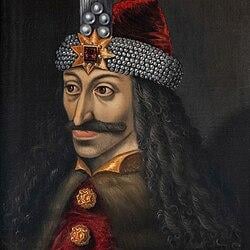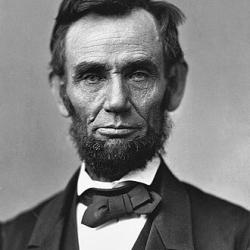Here is a real quick non-detailed overview of (only) some of the
People and Places
who existed before the First Christmas occurred.
This brief non-scholarly study gets many of its descriptions from Wikipedia.
I probably left out some interesting intriguing and engaging historical characters and ancient places.
I probably left out some interesting intriguing and engaging history.
I probably left out some great wonderful fascinating facts and events.
I probably have some writing errors.
But then again this is a brief list historical trivia that happened before the first Christmas.
Don’t except more than just a simple introduction to some of the major players in world history B.C. or B.C.E
If you notice something missing you think should be included, write to me and maybe I’ll include it in an updated future later edition of this post.
But for now, here is what I got.
How It All Began
The Big Bang
Fr. Georges Lemaître (July 17, 1894 – June 20, 1966) was the first to theorize that the recession of nearby galaxies can be explained by an expanding universe, which was observationally confirmed soon afterwards by Edwin Hubble. He first derived “Hubble’s law”, now called the Hubble–Lemaître law by the IAU,and published the first estimation of the Hubble constant in 1927, two years before Hubble’s article. Fr. Lemaître also proposed the “Big Bang theory” of the origin of the universe, calling it the “hypothesis of the primeval atom“, and later calling it “the beginning of the world”.
In the beginning God created the heavens and the earth. –Genesis 1:1 NIV
Learn more about the ancient world history and other fascinating events with the Biblical Figures Who Lived Before The First Christmas
Prehistory
Dinosaurs
Basic Dinosaur Facts
From Dinosaur Facts | American Museum of Natural History (amnh.org)
- Dinosaurs are a group of reptiles that have lived on Earth for about 245 million years.
- In 1842, the English naturalist Sir Richard Owen coined the term Dinosauria, derived from the Greek deinos, meaning “fearfully great,” and sauros, meaning “lizard.”
- Dinosaur fossils have been found on all seven continents.
- All non-avian dinosaurs went extinct about 66 million years ago.
- There are roughly 700 known species of extinct dinosaurs.
- Modern birds are a kind of dinosaur because they share a common ancestor with non-avian dinosaurs.
When Does History Begin?
It is a simple sounding question, but history never yields easy answers. Come explore the interesting connotations of the beginning of history with the The Cynical Historian.
Early Man
About 70,000 years ago, organisms belonging to the species Homo sapiens started to form even more elaborate structures called cultures. The subsequent development of these human cultures is called history. There were humans long before there was history. These archaic humans loved, played, formed close friendships and competed for status and power – but so did chimpanzees, baboons and elephants. There was nothing special about humans. Nobody, least of all humans themselves, had any inkling that their descendants would one day walk on the moon, split the atom, fathom the genetic code and write history books. The most important thing to know about prehistoric humans is that they were insignificant animals with no more impact on their environment than gorillas, fireflies or jellyfish.
–Yuval Noah Harari, Sapiens: A Brief History of Humankind (2015) Harper.
How do you square scientific discoveries of humanity with the Christian biblical teaching of humanity?
Concerning human evolution, the Church allows for the possibility that man’s body developed from previous biological forms, under God’s guidance, but it insists on the special creation of his soul. Pope Pius XII declared that “the teaching authority of the Church does not forbid that, in conformity with the present state of human sciences and sacred theology, research and discussions . . . take place with regard to the doctrine of evolution, in as far as it inquires into the origin of the human body as coming from pre-existent and living matter—[but] the Catholic faith obliges us to hold that souls are immediately created by God” (Pius XII, Humani Generis 36). So whether the human body was specially created or developed, we are required to hold as a matter of Catholic faith that the human soul is specially created; it did not evolve, and it is not inherited from our parents, as our bodies are.
While the Church permits belief in either special creation or developmental creation on certain questions, it in no circumstances permits belief in atheistic evolution. Adam, Eve, and Evolution | Catholic Answers Tract
November 24, 1974 – A skeleton from the hominid species Australopithecus afarensis is discovered and named Lucy in Ethiopia, at Hadar, a site in the Awash Valley of the Afar Triangle by Donald Johanson, a paleoanthropologist of the Cleveland Museum of Natural History.
Here’s something interesting to ponder.
Places That Existed
Before The First Christmas
Seven Wonders of the Ancient World
The Greek historian Herodotus (484 – c. 425 BC) and the scholar Callimachus of Cyrene (c. 305–240 BC), at the Museum of Alexandria, made early lists of seven wonders. These lists have not survived, however, except as references in other writings.
The classic Seven Wonders were…
- Great Pyramid of Giza, in El Giza, Egypt, the earliest of the wonders to be completed, as well as the only one that still exists in the present day. See below for more information.
- Colossus of Rhodes, in the harbor of the city of Rhodes, on the Greek island of the same name.
- Hanging Gardens of Babylon, in Babylon, near present-day Hillah, Babil province, Iraq; or Nineveh, Mosul, Nineveh Governorate, Iraq.
- Lighthouse of Alexandria, in Alexandria, Egypt.
- Mausoleum at Halicarnassus, in Halicarnassus, a city of the Achaemenid Empire in present-day Turkey.
- Statue of Zeus at Olympia, in Olympia, Greece.
- Temple of Artemis at Ephesus, in the city of Ephesus, near present-day Selçuk, Turkey.
More Wonders of the World
Lascaux Cave (17,000 BC)
Lascaux Cave”) is a network of caves near the village of Montignac, in the department of Dordogne in southwestern France. Over 600 parietal wall paintings cover the interior walls and ceilings of the cave. The paintings represent primarily large animals, typical local contemporary fauna that correspond with the fossil record of the Upper Paleolithic in the area.
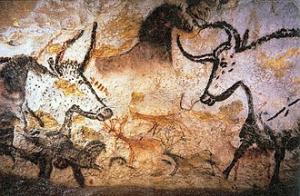
Atlantis is a fictional island mentioned in Plato‘s works Timaeus and Critias as part of an allegory on the hubris of nations. While Plato’s story was not part of the Greek mythic tradition and his dialogues use it solely as an allegory about hubris, researchers have speculated about real natural disasters that could have served as inspiration. Additionally, many works of pseudohistory and pseudoarchaeology treat the story as fact, offering reinterpretations which tie to national mysticism or theories of ancient aliens. While Plato’s story explicitly locates Atlantis in the Atlantic Ocean beyond the Pillars of Hercules, location hypotheses include Helike, Thera, Troy, and the North Pole.
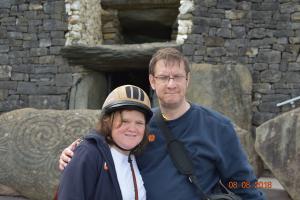
1842 – Karl Richard Lepsius (December 23, 1810 – July 10, 1884) begins an expedition to Egypt and the Sudan commissioned by King Frederick William IV of Prussia. Karl and his team spent six months making some of the first scientific studies of the pyramids of Giza, Abusir, Saqqara, and Dahshur. They discovered 67 pyramids recorded in the pioneering Lepsius list of pyramids and more than 130 tombs of noblemen in the area. While at the Great Pyramid of Giza, Lepsius inscribed a graffito written in Egyptian hieroglyphs that honours Friedrich Wilhelm IV above the pyramid’s original entrance; it is still visible. GP Hieroglyphics”.
1877 – The Great Pyramid of Egypt, Miracle in Stone: Secrets and Advanced Knowledge (1877) is published by Joseph Augustus Seiss (March 18, 1823 – June 20, 1904). He was an American theologian and Lutheran minister known for his religious writings on pyramidology and dispensationalism. His book on the pyramid is considered a primary text of pyramidology.
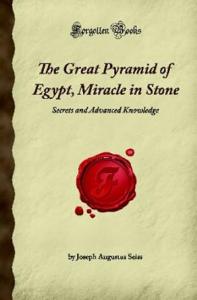
This man made wonder is a series of defensive fortifications built across the historical northern borders of China, with some segments dating to as early as the 7th century BC.
Petra is a historic and archaeological city in southern Jordan. Famous for its rock-cut architecture and water conduit system, Petra is also called the “Rose City” because of the colour of the stone from which it is carved; it was famously called “a rose-red city half as old as time” in a poem of 1845 by John Burgon. It is adjacent to the mountain of Jabal Al-Madbah, in a basin surrounded by mountains forming the eastern flank of the Arabah valley running from the Dead Sea to the Gulf of Aqaba. Access to the city is through a famously picturesque 1.2-kilometre-long (3⁄4 mi) gorge called the Siq, which leads directly to the Khazneh.
The area around Petra has been inhabited from as early as 7000 BC, and the Nabataeans might have settled in what would become the capital city of their kingdom as early as the 4th century BC. Archaeological work has only discovered evidence of Nabataean presence dating back to the second century BC, by which time Petra had become their capital. The Nabataeans were nomadic Arabs who invested in Petra’s proximity to the incense trade routes by establishing it as a major regional trading hub.
Petra is also an American music group regarded as a pioneer of the Christian rock and contemporary Christian music genres and was, for many years, regarded as the “world’s most popular Christian rock band”.
The Nazca Lines are a group of geoglyphs made in the soil of the Nazca Desert in southern Peru. They were created between 500 BC and 500 AD by people making depressions or shallow incisions in the desert floor, removing pebbles and leaving different-colored dirt exposed.
Alexandria came to be regarded as the capital of knowledge and learning, in part because of the Great Library.[11] Many important and influential scholars worked at the Library during the third and second centuries BC, including: Zenodotus of Ephesus, who worked towards standardizing the works of Homer; Callimachus, who wrote the Pinakes, sometimes considered the world’s first library catalog; Apollonius of Rhodes, who composed the epic poem the Argonautica; Eratosthenes of Cyrene, who calculated the circumference of the earth within a few hundred kilometers of accuracy; Hero of Alexandria, who invented the first recorded steam engine; Aristophanes of Byzantium, who invented the system of Greek diacritics and was the first to divide poetic texts into lines; and Aristarchus of Samothrace, who produced the definitive texts of the Homeric poems as well as extensive commentaries on them. During the reign of Ptolemy III Euergetes, a daughter library was established in the Serapeum, a temple to the Greco-Egyptian god Serapis.
We’ve looked at some interesting historical places.
Now lets look at some of the individuals that lived in some of those places.
The majority of these folks are Egyptian, Greek, Roman or Chinese.
People That Existed
Before The First Christmas
Leaders and Rulers
King Khufu (circa 2551–2528 B.C.) was an ancient Egyptian monarch who was the second pharaoh of the Fourth Dynasty, in the first half of the Old Kingdom period (26th century BC). Khufu succeeded his father Sneferu as king. He is generally accepted as having commissioned the Great Pyramid of Giza, one of the Seven Wonders of the Ancient World, but many other aspects of his reign are poorly documented.
Akhenaten or Amenhotep IV was an ancient Egyptian pharaoh reigning c. 1353–1336 or 1351–1334 BC, the tenth ruler of the Eighteenth Dynasty. As a pharaoh, Akhenaten is noted for abandoning Egypt’s traditional polytheism and introducing Atenism, or worship centered around Aten. The views of Egyptologists differ as to whether the religious policy was absolutely monotheistic, or whether it was monolatristic, syncretistic, or henotheistic. This culture shift away from traditional religion was reversed after his death.
1907 – The potential tomb of the famous Pharaoh Akhenaten is discovered by Edward R. Ayrton in The Valley of the Kings. As a pharaoh, Akhenaten is noted for abandoning Egypt’s traditional polytheism and introducing Atenism, or worship centered around Aten.
He is the major antagonist in limited comic-book series Marvel: The End (2003). In this series, Akhenaten is abducted by an alien order in the 14th century BC and reappears on modern Earth seeking to restore his kingdom. He is opposed by essentially all of the other superheroes and supervillains in the Marvel comic book universe and is eventually defeated by Thanos.
Tutankhamun (c. 1341 BC – c. 1323 BC), also known as King Tut was the antepenultimate pharaoh of the Eighteenth Dynasty of ancient Egypt. His death marked the cessation of the dynasty’s royal line.
November 4, 1922 – The tomb of Tutankhamun is discovered in the Valley of the Kings by excavators led by the Egyptologist Howard Carter.
10 Ways King Tut Influenced Pop Culture (mentalfloss.com)
Amenhotep III was the ninth pharaoh of the Eighteenth Dynasty. According to different authors, he ruled Egypt from June 1386 to 1349 BC, or from June 1388 BC to December 1351 BC/1350 BC. Tomb WV22, also known as KV22, was his burial place. It is located in the Western arm of the Valley of the Kings, the tomb is unique in that it has two subsidiary burial chambers for the pharaoh’s wives Tiye and Sitamen (who was also his daughter). It was officially discovered by Prosper Jollois and Édouard de Villiers du Terrage, engineers with Napoleon‘s expedition to Egypt in August 1799, but had probably been open for some time.
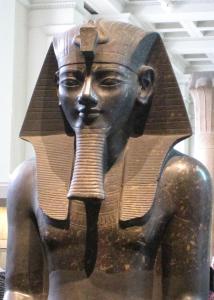
Ramesses III was the second Pharaoh of the Twentieth Dynasty in Ancient Egypt. He is thought to have reigned from 26 March 1186 to 15 April 1155 BC and is considered to be the last great monarch of the New Kingdom to wield any substantial authority over Egypt. Thanks to the discovery of papyrus trial transcripts (dated to Ramesses III), it is now known that there was a plot against his life as a result of a royal harem conspiracy during a celebration at Medinet Habu On day 15 of month 2 of Shemu 1155 BCE.
1886 – The mummy of Ramesses III is discovered by antiquarians and is regarded as the prototypical Egyptian Mummy in numerous Hollywood movies. His tomb (KV11) is one of the largest in the Valley of the Kings.
Cyrus the Great (c. 600–530 BC) was the founder of the Achaemenid Persian Empire.
In the first year of King Cyrus, Cyrus the king issued a decree: “Concerning the house of God at Jerusalem, let the temple, the place where sacrifices are offered, be rebuilt and let its foundations be retained, its height being 60 cubits and its width 60 cubits; with three layers of huge stones and one layer of timbers. And let the cost be paid from the royal treasury. Also let the gold and silver utensils of the house of God, which Nebuchadnezzar took from the temple in Jerusalem and brought to Babylon, be returned and brought to their places in the temple in Jerusalem; and you shall put them in the house of God.” — (Ezra 6:3–5)
Alexander the Great was a king of the ancient Greek kingdom of Macedon. He succeeded his father Philip II to the throne in 336 BC at the age of 20, and spent most of his ruling years conducting a lengthy military campaign throughout Western Asia and Egypt. By the age of 30, he had created one of the largest empires in history, stretching from Greece to northwestern India. He was undefeated in battle and is widely considered to be one of history’s greatest and most successful military commanders.
In the novel by Jonathan Swift, Gulliver’s Travels in part III, chapter VII, Gulliver sees and talks to the ghost of Alexander.
Julius Caesar (July 12, 100 BC – March 15, 44 BC) was a Roman general and statesman. A member of the First Triumvirate, Caesar led the Roman armies in the Gallic Wars before defeating his political rival Pompey in a civil war, and subsequently became dictator from 49 BC until his assassination in 44 BC. He played a critical role in the events that led to the demise of the Roman Republic and the rise of the Roman Empire.
In Jonathan Swift‘s 1726 satire Gulliver’s Travels, Gulliver has a conversation with evocations of Caesar and Brutus and Caesar confesses that all his glory does not equal the glory Brutus gained by murdering him.
The Magic City (1910), a children’s fantasy novel by E. Nesbit, has Julius Caesar emerge from the pages of De Bello Gallico to rout the barbarians.
Friends, Romans, countrymen, lend me your ears;
I come to bury Caesar, not to praise him.
The evil that men do lives after them;
The good is oft interred with their bones;
So let it be with Caesar. The noble Brutus
Hath told you Caesar was ambitious:
If it were so, it was a grievous fault;
And grievously hath Caesar answer’d it.
Here, under leave of Brutus and the rest, —
For Brutus is an honorable man;
So are they all, all honorable men, —
Come I to speak in Caesar’s funeral.
He was my friend, faithful and just to me:
But Brutus says he was ambitious;
And Brutus is an honorable man.
Antony, scene ii
William Shakespeare – Julius Caesar
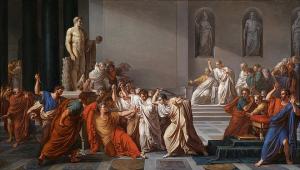
The Death of Julius Caesar, as depicted by Vincenzo Camuccini.
Caesar was assassinated on the Ides of March (15 March) 44 BC.
Cleopatra(69–30 BCE) was the last pharaoh of Egypt to rule during the Hellenistic era. After the death of Cleopatra, Egypt became a province of the Roman Empire, marking the end of the last Hellenistic-period state in the Mediterranean and of the age that had lasted since the reign of Alexander (336–323 BC).
- Doctor Who:
- “The Pandorica Opens“, River Song poses as Cleopatra several decades after her death
- “The Husbands of River Song“, it is implied that The Doctor was once married to Cleopatra
Mark Antony (January 14, 83 BC – August 1, 30 BC), was a Roman politician and general who played a critical role in the transformation of the Roman Republic from a constitutional republic into the autocratic Roman Empire.
Civil war between Antony and Octavian was averted in 40 BC, when Antony married Octavian’s sister, Octavia. Despite this marriage, Antony carried on a love affair with Cleopatra, who bore him three children, further straining Antony’s relations with Octavian. Antony and Cleopatra fled to Egypt where, having again been defeated at the Battle of Alexandria, they committed suicide.
With Antony dead, Octavian became the undisputed master of the Roman world. In 27 BC, Octavian was granted the title of Augustus, marking the final stage in the transformation of the Roman Republic into an empire, with himself as the first Roman emperor.
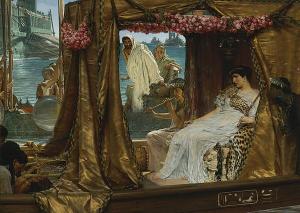
Antony and Cleopatra (1883) by Lawrence Alma-Tadema
depicting Antony’s meeting with Cleopatra in 41 BC.
Augustus (Octavian) ( September 23, 63 BC – 19 August 19,AD 14) was the founder of the Roman Empire; he reigned as the first Roman emperor from 27 BC until his death in AD 14. The reign of Augustus initiated an imperial cult as well as an era associated with imperial peace, the Pax Romana or Pax Augusta, in which the Roman world was largely free of armed conflict aside from expansionary wars and the Year of the Four Emperors. The Principate system of imperial rule established by Augustus lasted until the Crisis of the Third Century.The Roman Empire that Augustus created lasted for 500 years.
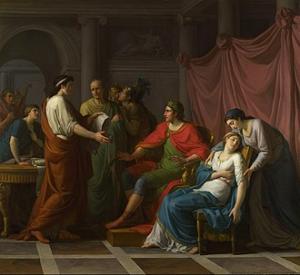
Virgil reading the Aeneid to Augustus and Octavia,
by Jean-Joseph Taillasson, 1787
In the Golden Legend, among other works from the Middle Ages, a legendary meeting between Augustus and the Tiburtine Sibyl is recounted. According to the story, Augustus inquires of the Sibyl whether he should be worshiped as a god. In response, the Sibyl reveals to Augustus a vision of the Virgin and the Christ Child, who will eclipse all Roman gods.
The 1934 historical fiction novel I, Claudius by Robert Graves has Augustus play a central role.
Philosophers
Thales of Miletus (c. 626/623 – c. 548/545 BC) was an Ancient Greek pre-Socratic philosopher from Miletus in Ionia, Asia Minor. Thales was one of the Seven Sages, founding figures of Ancient Greece, and credited with the saying “know thyself” which was inscribed on the Temple of Apollo at Delphi.
Many regard him as the first philosopher in the Greek tradition, breaking from the prior use of mythology to explain the world and instead using natural philosophy. He is thus otherwise credited as the first to have engaged in mathematics, science, and deductive reasoning.
Time is the wisest of all things that are; for it brings everything to light.
-As quoted in Diogenes Laërtius, The Lives and Opinions of Eminent Philosophers, I, 35
Pythagoras of Samos (c. 570 – c. 495 BC)[b] was an ancient Ionian Greek philosopher, polymath and the eponymous founder of Pythagoreanism. The teaching most securely identified with Pythagoras is metempsychosis, or the “transmigration of souls”, which holds that every soul is immortal and, upon death, enters into a new body. He may have also devised the doctrine of musica universalis, which holds that the planets move according to mathematical equations and thus resonate to produce an inaudible symphony of music. In antiquity, Pythagoras was credited with many mathematical and scientific discoveries, including the Pythagorean theorem, Pythagorean tuning, the five regular solids, the Theory of Proportions, the sphericity of the Earth, and the identity of the morning and evening stars as the planet Venus.
Diogenes Laërtes retells a story told by Hermippus of Samos, which states that Pythagoras had once gone into an underground room, telling everyone that he was descending to the underworld. He stayed in this room for months, while his mother secretly recorded everything that happened during his absence. After he returned from this room, Pythagoras recounted everything that had happened while he was gone, convincing everyone that he had really been in the underworld and leading them to trust him with their wives.
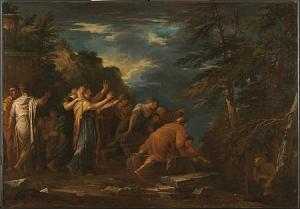
Pythagoras Emerging from the Underworld (1662) by Salvator Rosa
Pythagoras continued to be regarded as a great philosopher throughout the Middle Ages and his philosophy had a major impact on scientists such as Nicolaus Copernicus, Johannes Kepler, and Isaac Newton. Pythagorean symbolism was used throughout early modern European esotericism, and his teachings as portrayed in Ovid‘s Metamorphoses influenced the modern vegetarian movement.
We ought so to behave to one another as to avoid making enemies of our friends, and at the same time to make friends of our enemies.
-As quoted in Diogenes Laërtius, Lives and Opinions of Eminent Philosophers, “Pythagoras”, Sect. 23, as translated in Dictionary of Quotations (1906) by Thomas Benfield Harbottle, p. 320
Parmenides of Elea (b 510 BCE) was a pre-Socratic Greek philosopher from Elea in Magna Graecia.
The single known work by Parmenides is a poem whose original title is unknown but which is often referred to as On Nature. Only fragments of it survive. In his poem, Parmenides prescribes two views of reality. The first, the Way of “Aletheia” or truth, describes how all reality is one, change is impossible, and existence is timeless and uniform. The second view, the way of “Doxa“, or opinion, describes the world of appearances, in which one’s sensory faculties lead to conceptions which are false and deceitful.
Parmenides has been considered the founder of ontology and has, through his influence on Plato, influenced the whole history of Western philosophy.
You must learn all things, both the unshaken heart of persuasive truth, and the opinions of mortals in which there is no true warranty.
-Frag B 1.28-30, quoted by Sextus Empiricus, Against the Mathematicians, vii. 3; Simplicius, Commentary on the Heavens, 557-8; Proclus, Commentary on the Timaeus I, 345
Socrates (c. 470–399 BC) was a Greek philosopher from Athens who is credited as the founder of Western philosophy and among the first moral philosophers of the ethical tradition of thought. Socrates was a polarizing figure in Athenian society. In 399 BC, he was accused of impiety and corrupting the youth. After a trial that lasted a day, he was sentenced to death. He spent his last day in prison, refusing offers to help him escape.
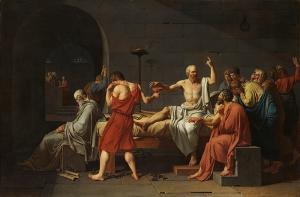
Plato’s dialogues are among the most comprehensive accounts of Socrates to survive from antiquity. They demonstrate the Socratic approach to areas of philosophy including epistemology and ethics. The Platonic Socrates lends his name to the concept of the Socratic method, and also to Socratic irony. The Socratic method of questioning, or elenchus, takes shape in dialogue using short questions and answers, epitomized by those Platonic texts in which Socrates and his interlocutors examine various aspects of an issue or an abstract meaning, usually relating to one of the virtues, and find themselves at an impasse, completely unable to define what they thought they understood. Socrates is known for proclaiming his total ignorance; he used to say that the only thing he was aware of was his ignorance, seeking to imply that the realization of our ignorance is the first step in philosophizing.
Interest in him continued unabated, as reflected in the works of Søren Kierkegaard and Friedrich Nietzsche. Depictions of Socrates in art, literature, and popular culture have made him a widely known figure in the Western philosophical tradition. Catholic philosopher Peter Kreet has published several books featuring Socrates.
Socrates: Truth is often stranger than fiction, you know. Which do you prefer?
Peter: You know, you’re stranger than fiction too, little man.
Socrates: That’s because I’m true too.
Peter: Who are you, anyway?
Socrates: I am Socrates.
Peter: Sure you are. And I’m E.T.
Socrates: I’m pleased to meet you, E.T.
Peter: My name is Peter Pragma.
Socrates: Do you have two names?
Peter: What do you mean?
Socrates: You said your name was E.T.
Peter: And you said your name was Socrates.
Socrates: Because it is. I have this strange habit of saying what is.
-Peter Kreeft, The Best Things in Life: A Contemporary Socrates Looks at Power, Pleasure, Truth the Good Life (1984) . InterVarsity Press
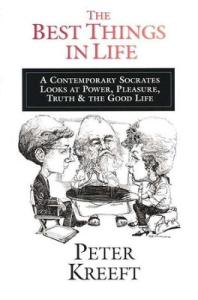
It is also believed that Socrates traveled through time to 1988 with two teenagers working on a history project and became good friends with Billy the Kid.
―
Plato (428/427 or 424/423 – 348 BC) was an ancient Greek philosopher born in Athens during the Classical period.
In Athens, Plato founded the Academy, a philosophical school where he taught the philosophical doctrines that would later become known as Platonism. Plato was an innovator of the written dialogue and dialectic forms in philosophy. He raised problems for what became all the major areas of both theoretical philosophy and practical philosophy. His most famous contribution is the theory of forms (or ideas), which has been interpreted as advancing a solution to what is now known as the problem of universals. He is the namesake of Platonic love and the Platonic solids. His own most decisive philosophical influences are usually thought to have been, along with Socrates, the pre-Socratics Pythagoras, Heraclitus, and Parmenides, although few of his predecessors’ works remain extant and much of what is known about these figures today derives from Plato himself.
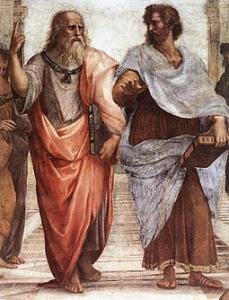
The School of Athens fresco by Raphael features Plato (left) also as a central figure, holding his Timaeus while he gestures to the heavens. Aristotle (right) gestures to the earth while holding a copy of his Nicomachean Ethics in his hand.
Along with his teacher, Socrates, and student Aristotle, Plato is a central figure in the history of philosophy. Unlike the work of nearly all of his contemporaries, Plato’s entire body of work is believed to have survived intact for over 2,400 years. Although their popularity has fluctuated, Plato’s works have consistently been read and studied. Through Neoplatonism Plato also greatly influenced both Christian (through e.g. Augustine of Hippo) and Islamic philosophy (through e.g. Al-Farabi). In modern times, Alfred North Whitehead famously said: “the safest general characterization of the European philosophical tradition is that it consists of a series of footnotes to Plato.”
For once touched by love, everyone becomes a poet.- Plato, The Symposium
Plato is perhaps best known to college students for his parable of a cave, which appears in Plato’s Republic.
Aristotle (384–322 BC) was an Ancient Greek philosopher and polymath. At 17 or 18 he joined Plato‘s Academy in Athens and remained there till the age of 37 (c. 347 BC). Shortly after Plato died, Aristotle left Athens and, at the request of Philip II of Macedon, tutored his son Alexander the Great beginning in 343 BC. He established a library in the Lyceum which helped him to produce many of his hundreds of books on papyrus scrolls.
Aristotle was revered among medieval Muslim scholars as “The First Teacher”, and among medieval Christians like Thomas Aquinas as simply “The Philosopher”, while the poet Dante called him “the master of those who know”. His works contain the earliest known formal study of logic, and were studied by medieval scholars such as Peter Abelard and Jean Buridan. Aristotle’s influence on logic continued well into the 19th century. In addition, his ethics, though always influential, gained renewed interest with the modern advent of virtue ethics.
Aristotle: Greatest Quotes (orionphilosophy.com)
The truly good and wise man will bear all kinds of fortune in a seemly way, and will always act in the noblest manner that the circumstances allow
Rash men wish for dangers beforehand but draw back when they are in them. Brave men are excited at the moment of action, but collected beforehand.
-Aristotle
Religious Leaders
Hinduism: Ok, not actually a leader. But it is a religion that existed before Christ and needs to be mentioned.
It is the world’s oldest religion, according to many scholars, with roots and customs dating back more than 4,000 years. Today, with more than 1 billion followers, Hinduism is the third-largest religion worldwide, after Christianity and Islam. Roughly 94 percent of the world’s Hindus live in India. Because the religion has no specific founder, it’s difficult to trace its origins and history. Hinduism is unique in that it’s not a single religion but a compilation of many traditions and philosophies: Hindus worship a number of different gods and minor deities, honor a range of symbols, respect several different holy books and celebrate with a wide variety of traditions, holidays and customs. Though the development of the caste system in India was influenced by Hindu concepts, it has been shaped throughout history by political as well as religious movements, and today is much less rigidly enforced. Today there are four major sects of Hinduism: Shaivism, Vaishnava, Shaktism and Smarta, as well as a number of smaller sects with their own religious practices.Hinduism – Origins, Facts & Beliefs | HISTORY
Zoroaster (Before 500 BC, likely 1500–1000 BC) is regarded as the spiritual founder of Zoroastrianism. He is said to have been an Iranian prophet who founded a religious movement that challenged the existing traditions of ancient Iranian religion, and inaugurated a movement that eventually became a staple religion in ancient Iran. He founded the first documented monotheistic religion in the world and also had an impact on Plato and Pythagoras. Zoroastrianism has a dualistic cosmology of good and evil within the framework of a monotheistic ontology and an eschatology which predicts the ultimate conquest of evil by good. Zoroastrianism exalts an uncreated and benevolent deity of wisdom known as Ahura Mazda (lit. ’Lord of Wisdom’) as its supreme being.
The Magi are priests in Zoroastrianism and the earlier religions of the western Iranians. Three particular Magi were visited Jesus after his birth, bearing gifts of gold, frankincense, and myrrh. They are regular figures in traditional accounts of the nativity celebrations of Christmas and are an important part of Christian tradition.
Siddhartha Gautama, most commonly referred to as the Buddha (‘the awakened’), was a wandering ascetic and religious teacher who lived in South Asia during the 6th or 5th century BCE and founded Buddhism. By the third century BCE Buddhism appears to have spread to China.
The Buddha’s central teachings emphasize the aim of attaining liberation from dukkha (often translated as “suffering” or “unease”[note 1]), the source of which is said to be attachment or clinging. He endorsed the Middle Way, a path of development that avoids both extreme asceticism and hedonism. A summary of this path is expressed in the Noble Eightfold Path, a cultivation of the mind which is said to lead to awakening and full liberation through observance of Buddhist ethics and meditation. Other widely observed practices include: monasticism; “taking refuge” in the Three Jewels: the Buddha, the dharma, and the saṅgha; and the cultivation of perfections (pāramitā).
Kong Fuzi ((c. 551 – c. 479 BCE), commonly latinized as Confucius,was a Chinese philosopher of the Spring and Autumn period who is traditionally considered the paragon of Chinese sages. Confucius’s teachings and philosophy underpin East Asian culture and society, and remain influential across China and East Asia to this day. His philosophical teachings, called Confucianism, emphasized personal and governmental morality, correctness of social relationships, justice, kindness, and sincerity, as well as an emphasis on a ruler’s duty to their subjects.
Shintoism is a religion originating from Japan. Classified as an East Asian religion by scholars of religion, its practitioners often regard it as Japan’s indigenous religion and as a nature religion. Scholars sometimes call its practitioners Shintoists, although adherents rarely use that term themselves. There is no central authority in control of Shinto, with much diversity of belief and practice evident among practitioners.
A polytheistic and animistic religion, Shinto revolves around supernatural entities called the kami . The kami are believed to inhabit all things, including forces of nature and prominent landscape locations. The kami are worshipped at kamidana household shrines, family shrines, and jinja public shrines.
Like Hinduism, Shinto has no single founder, nor any single canonical text. Although historians debate at what point it is suitable to refer to Shinto as a distinct religion, kami veneration has been traced back to Japan’s Yayoi period (300 BCE to 300 CE).
Scientists and Other Smart People
Imhotep (late 27th century BC) was an Egyptian chancellor to the Pharaoh Djoser, possible architect of Djoser‘s step pyramid, and high priest of the sun god Ra at Heliopolis. Very little is known of Imhotep as a historical figure, but in the 3,000 years following his death, he was gradually glorified and deified.
Imhotep is the antagonistic title character of Universal’s 1932 film The Mummy, its 1999 remake, and that film’s 2001 sequel. It helps to give curiosity a taste of The Mystery of Mummies.

Imhotep was also portrayed in the television show Stargate SG1 as being a false god and an alien known as a Goa’uld.
Anaximander of Miletus (c. 611–c. 547 BCE) His knowledge of geometry allowed him to introduce the gnomon in Greece. He created a map of the world that contributed greatly to the advancement of geography.
All things must in equity again decline into that whence they have their origin for they must give satisfaction and atonement for injustice each in the order of time.
-On Nature, as quoted by Friedrich Ueberweg, History of Philosophy, from Thales to the Present Time (1885) Vol. 1, p. 35.
Hippocrates of Kos (c. 460 – c. 370 BC), was a Greek physician traditionally referred to as the “Father of Medicine” in recognition of his lasting contributions to the field, such as the use of prognosis and clinical observation, the systematic categorization of diseases, or the formulation of humoral theory. The Hippocratic school of medicine revolutionized ancient Greek medicine, establishing it as a discipline distinct from other fields with which it had traditionally been associated (theurgy and philosophy), thus establishing medicine as a profession.
However, the achievements of the writers of the Hippocratic Corpus, the practitioners of Hippocratic medicine, and the actions of Hippocrates himself were often conflated; thus very little is known about what Hippocrates actually thought, wrote, and did. Hippocrates is commonly portrayed as the paragon of the ancient physician and credited with coining the Hippocratic Oath, which is still relevant and in use today. He is also credited with greatly advancing the systematic study of clinical medicine, summing up the medical knowledge of previous schools, and prescribing practices for physicians through the Hippocratic Corpus and other works.
HIPPOCRATES – Meet The Father of Modern Medicine & The Man Behind the Medical Oath – YouTube
As to diseases, make a habit of two things — to help, or at least, to do no harm.
-Epidemics, Book I, Ch. 2, Full text online at Wikisource
Herodotus (c. 484 – c. 425 BC) was a Greek historian and geographer from the Greek city of Halicarnassus, part of the Persian Empire (now Bodrum, Turkey) and a later citizen of Thurii in modern Calabria, Italy. He is known for having written the Histories – a detailed account of the Greco-Persian Wars. Herodotus was the first writer to perform systematic investigation of historical events. He is referred to as “The Father of History“, a title conferred on him by the ancient Roman orator Cicero.
In peace sons bury fathers, but in war fathers bury sons.
Variant translation: In peace, children inter their parents; war violates the order of nature and causes parents to inter their children.
–Herodotus The Histories Book 1, Ch. 87.
Thucydides (c. 460 – c. 400 BC) was an Athenian historian and general. His History of the Peloponnesian War recounts the fifth-century BC war between Sparta and Athens until the year 411 BC. Thucydides has been dubbed the father of “scientific history” by those who accept his claims to have applied strict standards of impartiality and evidence-gathering and analysis of cause and effect, without reference to intervention by the gods, as outlined in his introduction to his work.
He also has been called the father of the school of political realism, which views the political behavior of individuals and the subsequent outcomes of relations between states as ultimately mediated by, and constructed upon, fear and self-interest. His text is still studied at universities and military colleges worldwide. The Melian dialogue is regarded as a seminal text of international relations theory, while his version of Pericles’ Funeral Oration is widely studied by political theorists, historians, and students of the classics.
More generally, Thucydides developed an understanding of human nature to explain behavior in such crises as plagues, massacres, and wars.
The bravest are surely those who have the clearest vision of what is before them, glory and danger alike, and yet notwithstanding, go out to meet it.
Thucydides- History of the Peloponnesian War, Book II, 2.40-[3]
Euclid of Alexandria (300 BC) was an ancient Greek mathematician active as a geometer and logician. Considered the “father of geometry”, he is chiefly known for the Elements treatise, which established the foundations of geometry that largely dominated the field until the early 19th century. Euclid is generally considered among the greatest mathematicians of antiquity, and one of the most influential in the history of mathematics.
The Elements of Euclid is as small a part of mathematics as the Iliad is of literature; or as the sculpture of Phidias is of the world’s total art.
Cassius Jackson Keyser, Lectures on Science, Philosophy and Art (New York, 1908), p. 8. Reported in Moritz (1914)
Archimedes of Syracuse (c.287–c.212 BCE), he is regarded as one of the leading scientists in classical antiquity. Considered the greatest mathematician of ancient history, and one of the greatest of all time. Archimedes designed, including improved catapults, crane-like machines that could be swung around in an arc, and other stone-throwers. Although the Romans ultimately captured the city, they suffered considerable losses due to Archimedes’ inventiveness. Cicero (106–43 BC) mentions Archimedes in some of his works.
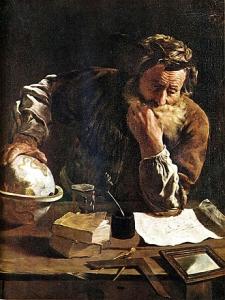
Archimedes Thoughtful
by Domenico Fetti (1620)
I have found it! or I have got it!, commonly quoted as Eureka!
What Archimedes of Syracuse exclaimed as he ran naked from his bath, realizing that by measuring the displacement of water an object produced, compared to its weight, he could measure its density (and thus determine the proportion of gold that was used in making a king’s crown); as quoted by Vitruvius Pollio in De Architectura, ix.215;
Eratosthenes of Cyrene (c. 276 BC – c. 195/194 BC) was a Greek polymath: a mathematician, geographer, poet, astronomer, and music theorist. He was a man of learning, becoming the chief librarian at the Library of Alexandria. His work is comparable to what is now known as the study of geography, and he introduced some of the terminology still used today.
He is best known for being the first person known to calculate the circumference of the Earth, which he did by using the extensive survey results he could access in his role at the Library; his calculation was remarkably accurate. He was also the first to calculate Earth’s axial tilt, which has also proved to have remarkable accuracy. He created the first global projection of the world, incorporating parallels and meridians based on the available geographic knowledge of his era.
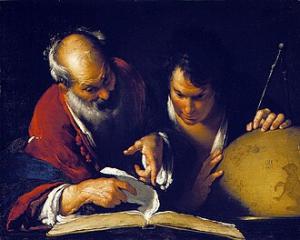
Eratosthenes teaching in Alexandria by Bernardo Strozzi (1635)
Cicero (106–43 BCE), best known as an eloquent Roman orator, rose remarkably to the top of the Roman political hierarchy where he received the accolade Pater patriae “father of his country;” then he fell precipitously, went into exile because of his hostile relations with Clodius Pulcher, made a permanent name for himself in Latin literature, and had relations with all the contemporary big names, Caesar, Pompey, Mark Antony, and Octavian (Augustus).
He was assassinated by soldiers under the command of Marc Antony 43 BC. When first captured by his killers he bowed to his captors, leaning his head out of the litter in a gladiatorial gesture to ease the task. By baring his neck and throat to the soldiers, he was indicating that he would not resist. According to Plutarch, Herennius first slew him, then cut off his head. On Antony’s instructions his hands, which had penned the Philippics against Antony, were cut off as well; these were nailed along with his head on the Rostra in the Forum Romanum according to the tradition of Marius and Sulla, both of whom had displayed the heads of their enemies in the Forum. Cicero was the only victim of the proscriptions who was displayed in that manner. According to Cassius Dio, in a story often mistakenly attributed to Plutarch,[114] Antony’s wife Fulvia took Cicero’s head, pulled out his tongue, and jabbed it repeatedly with her hairpin in final revenge against Cicero’s power of speech.
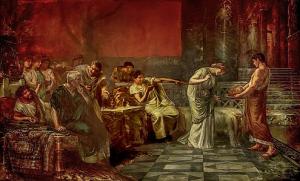
The Vengeance of Fulvia by Francisco Maura y Montaner, 1888
depicting Fulvia inspecting the severed head of Cicero
“A room without books is like a body without a soul.”
―
Warriors
The Lost Army of Cambyses was, according to an ancient legend, a formation of 50,000 Persian soldiers that disappeared in the Western Desert of Egypt in 524 BC after becoming engulfed in a sandstorm. Although many Egyptologists regard the story as apocryphal, people have searched for the remains of the soldiers for years. They have included Count László Almásy (on whom the novel The English Patient is based) and modern geologist Tom Brown. In January 1933, Orde Wingate searched unsuccessfully in the Western Desert of Egypt, then known as the Libyan Desert.
Leonidas I (died 19 September 480 BC) was a king of the Greek city-state of Sparta, and the 17th of the Agiad line, a dynasty which claimed descent from the mythical demigod Heracles. Leonidas I was a son of King Anaxandridas II. He succeeded his half-brother King Cleomenes I to the throne in c. 489 BC. His co-ruler was King Leotychidas. He was succeeded by his son, King Pleistarchus.
At the Second Greco-Persian War, Leonidas led the allied Greek forces in a last stand at the Battle of Thermopylae (480 BC), attempting to defend the pass from the invading Persian army, and was killed early in the battle. Leonidas entered myth as a hero and the leader of the 300 Spartans. While the Greeks lost this battle, they were able to expel the Persian invaders in the following year.
Hannibal (247 – between 183 and 181 BC) was a Carthaginian general and statesman who commanded the forces of Carthage in their battle against the Roman Republic during the Second Punic War.
In 218 BC, Hannibal attacked Saguntum (modern Sagunt, Spain), an ally of Rome, in Hispania, sparking the Second Punic War. Hannibal invaded Italy by crossing the Alps with North African war elephants.
Spartacus (c. 103–71 BC) was a Thracian gladiator who, along with Crixus, Gannicus, Castus, and Oenomaus, was one of the escaped slave leaders in the Third Servile War, a major slave uprising against the Roman Republic. Little is known about him beyond the events of the war, and surviving historical accounts are sometimes contradictory. All sources agree that he was a former gladiator and an accomplished military leader.
Writers
The Old Testament part of The Holy Bible was written by various authors over the course of thousands of years.
Enheduanna (was the entu (high) priestess of the moon god Nanna (Sīn) in the Sumerian city-state of Ur in the reign of her father, Sargon of Akkad (r. c. 2334 – c. 2279). She was likely appointed by her father as the leader of the religious group at Ur to cement ties between the Akkadian religion of her father and the native Sumerian religion.
Enheduanna has been celebrated as the earliest known named author in world history, as a number of works in Sumerian literature, such as the Exaltation of Inanna feature her as the first-person narrator, and other works, such as the Sumerian Temple Hymns may identify her as their author. However, there is considerable debate among modern Assyriologists based on linguistic and archaeological grounds as to whether or not she actually wrote or composed any of the rediscovered works that have been attributed to her. Additionally, the only manuscripts of the works attributed to her were written by scribes in the First Babylonian Empire six centuries after she lived, written in a more recent dialect of the Sumerian language than she would have spoken. These scribes may have attributed these works to her as part of the legendary narratives of the dynasty of Sargon of Akkad in later Babylonian traditions.
The Greeks
Homer (c. 8th century BC) was a Greek poet who is credited as the author of the Iliad and the Odyssey, two epic poems that are foundational works of ancient Greek literature. Homer is considered one of the most revered and influential authors in history.Homer’s Iliad centers on a quarrel between King Agamemnon and the warrior Achilles during the last year of the Trojan War. The Odyssey chronicles the ten-year journey of Odysseus, king of Ithaca, back to his home after the fall of Troy.
Aesop (c. 620–564 BCE ) was a Greek fabulist and storyteller credited with a number of fables now collectively known as Aesop’s Fables. Although his existence remains unclear and no writings by him survive, numerous tales credited to him were gathered across the centuries and in many languages in a storytelling tradition that continues to this day. Many of the tales associated with him are characterized by anthropomorphic animal characters.
Much later in 1563-Pope Pius IV, convinced that reading the fables of Aesop was of great use in forming the morals of young children, commissioned Gabriel Faerno, whom he knew as an excellent poet as well as a man with a taste for elegant and beautiful Latinity, to versify these fables so that children might learn, at the same time and from the same book, both moral and linguistic purity.
Sophocles (c. 497/496 – winter 406/405 BC) was an ancient Greek tragedian, known as one of three from whom at least one play has survived in full. His first plays were written later than, or contemporary with, those of Aeschylus; and earlier than, or contemporary with, those of Euripides. Sophocles wrote over 120 plays, but only seven have survived in a complete form: Ajax, Antigone, Women of Trachis, Oedipus Rex, Electra, Philoctetes and Oedipus at Colonus. For almost fifty years, Sophocles was the most celebrated playwright in the dramatic competitions of the city-state of Athens which took place during the religious festivals of the Lenaea and the Dionysia. He competed in thirty competitions, won twenty-four, and was never judged lower than second place. Aeschylus won thirteen competitions, and was sometimes defeated by Sophocles; Euripides won four.
Euripides (c. 480 – c. 406 BC) was a tragedian of classical Athens. Along with Aeschylus and Sophocles, he is one of the three ancient Greek tragedians for whom any plays have survived in full. Some ancient scholars attributed ninety-five plays to him, but the Suda says it was ninety-two at most. Of these, eighteen or nineteen have survived more or less complete (Rhesus is suspect).
Phidias (c. 480 – 430 BC) was not a writer but an sculptor, painter, and architect. His words were carved in statues. His Statue of Zeus at Olympia was one of the Seven Wonders of the Ancient World. Phidias also designed the statues of the goddess Athena on the Athenian Acropolis, namely the Athena Parthenos inside the Parthenon, and the Athena Promachos, a colossal bronze which stood between it and the Propylaea, a monumental gateway that served as the entrance to the Acropolis in Athens. Phidias was the son of Charmides of Athens. The ancients believed that his masters were Hegias and Ageladas.
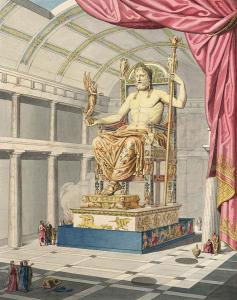
Olympian Zeus in the sculptured antique art of Quatremère de Quincy (1815).
Aeschylus(c. 525–456 BCE) was an ancient Greek tragedian often described as the father of tragedy. Academic knowledge of the genre begins with his work, and understanding of earlier Greek tragedy is largely based on inferences made from reading his surviving plays. According to Aristotle, he expanded the number of characters in the theatre and allowed conflict among them. Formerly, characters interacted only with the chorus.
Pindar (c. 518 BC – c. 438 BC) was an Ancient Greek lyric poet from Thebes. Of the canonical nine lyric poets of ancient Greece, his work is the best preserved. Quintilian wrote, “Of the nine lyric poets, Pindar is by far the greatest, in virtue of his inspired magnificence, the beauty of his thoughts and figures, the rich exuberance of his language and matter, and his rolling flood of eloquence, characteristics which, as Horace rightly held, make him inimitable.”
Aristophanes (c. 448–385 BCE) known as “The Father of Comedy” and “the Prince of Ancient Comedy”, a genre of comic drama known as Old Comedy Aristophanes has been said to recreate the life of ancient Athens more convincingly than any other author. His powers of ridicule were feared and acknowledged by influential contemporaries; Plato singled out Aristophanes’ play The Clouds as slander that contributed to the trial and subsequent condemning to death of Socrates, although other satirical playwrights[10] had also caricatured the philosopher.
Virgil (October 15, 70 – September 21, 19 BC), was an ancient Roman poet of the Augustan period. He composed three of the most famous poems in Latin literature: the Eclogues (or Bucolics), the Georgics, and the epic Aeneid. A number of minor poems, collected in the Appendix Vergiliana, were attributed to him in ancient times, but modern scholars consider his authorship of these poems to be dubious.
Virgil’s work has had great influence on Western literature, most notably Dante‘s Divine Comedy, in which Virgil appears as the author’s guide through Hell and Purgatory. Virgil has been traditionally ranked as one of Rome’s greatest poets. His Aeneid is also considered a national epic of ancient Rome, a title held since composition.
The Romans
Ovid (March 21, 43 BC – AD 17/18), was a Roman poet who lived during the reign of Augustus. He was a younger contemporary of Virgil and Horace, with whom he is often ranked as one of the three canonical poets of Latin literature.
Gluttonous Envy, burst: my name’s well known already
it will be more so, if only my feet travel the road they’ve started.
But you’re in too much of a hurry: if I live you’ll be more than sorry:
many poems, in fact, are forming in my mind.-Ovid
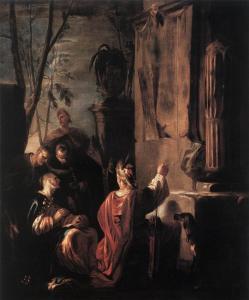
Scythians at the Tomb of Ovid (c. 1640), by Johann Heinrich Schönfeld
Miguel de Cervantes also used the Metamorphoses as a platform of inspiration for his prodigious novel Don Quixote. Ovid is both praised and criticized by Cervantes in his Don Quixote, where he warns against satires that can exile poets, as happened to Ovid.
In the 16th century, some Jesuit schools of Portugal cut several passages from Ovid’s Metamorphoses. While the Jesuits saw his poems as elegant compositions worthy of being presented to students for educational purposes, they also felt his works as a whole might corrupt students.[83] The Jesuits took much of their knowledge of Ovid to the Portuguese colonies. According to Serafim Leite (1949), the ratio studiorum was in effect in Colonial Brazil during the early 17th century, and in this period Brazilian students read works like the Epistulae ex Ponto to learn Latin grammar.[8
Horace, (December 8, 65 BC– November 27, 8 BC), was the leading Roman lyric poet during the time of Augustus (also known as Octavian). The rhetorician Quintilian regarded his Odes as just about the only Latin lyrics worth reading: “He can be lofty sometimes, yet he is also full of charm and grace, versatile in his figures, and felicitously daring in his choice of words.”
Horace’s popularity is revealed in the large number of quotes from all his works found in almost every genre of medieval literature, and also in the number of poets imitating him in quantitative Latin meter.
Dante referred to Horace as Orazio satiro, and he awarded him a privileged position in the first circle of Hell, with Homer, Ovid and Lucan.
“Ut haec ipsa qui non sentiat deorum vim habere is nihil omnino sensurus esse videatur.”
If any man cannot feel the power of God when he looks upon the stars, then I doubt whether he is capable of any feeling at all.”
―
Lucan (November 3, 39 AD – April 30, 65 AD),was a Roman poet, born in Corduba He is regarded as one of the outstanding figures of the Imperial Latin period, known in particular for his epic Pharsalia. His youth and speed of composition set him apart from other poets.
Make haste; delay is ever fatal to those who are prepared.
-Lucan- Book I, line 281 (tr. J. D. Duff).
BONUS
Chiroptic Artifacts
The Decipherment of the Fuente Magna Bowl
A large bowl, allegedly discovered near Lake Titicaca in Bolivia, is said to bear ancient Old World writing, suggesting transatlantic links at least 4000 years before Columbus.- Joel Levy Unsolved Mysteries (2016)
An enigmatic clay disk, block printed with hieroglyphs in an indecipherable, unknown script, is unique in the ancient world- and 2,500 years ahead of its time. – Joel Levy Unsolved Mysteries (2016)
An ancient Persian jar is discovered, but it is soon clear that it resembles a battery, despite pre-dating conventionally recognized electrochemical technology by at least 1,200 years. – Joel Levy Unsolved Mysteries (2016)
The Antikythera mechanism is an Ancient Greek hand-powered orrery (model of the Solar System), described as the oldest known example of an analogue computer[1][2][3] used to predict astronomical positions and eclipses decades in advance.[4][5][6] It could also be used to track the four-year cycle of athletic games which was similar to an Olympiad, the cycle of the ancient Olympic Games.






